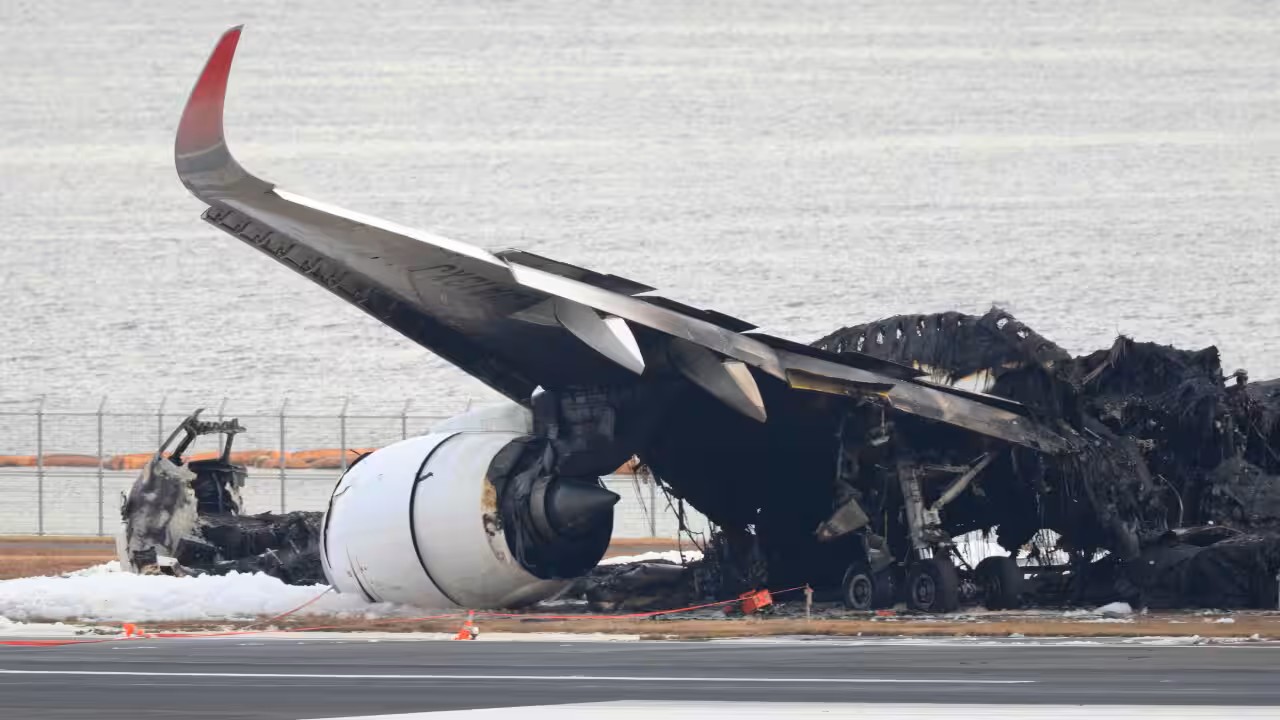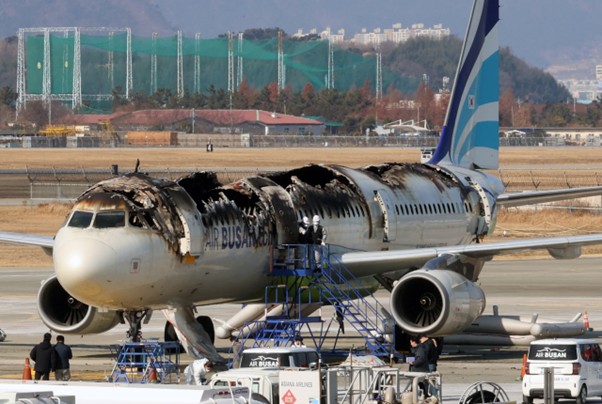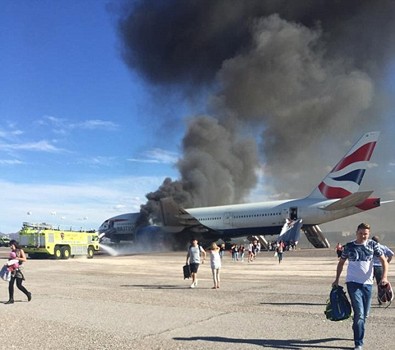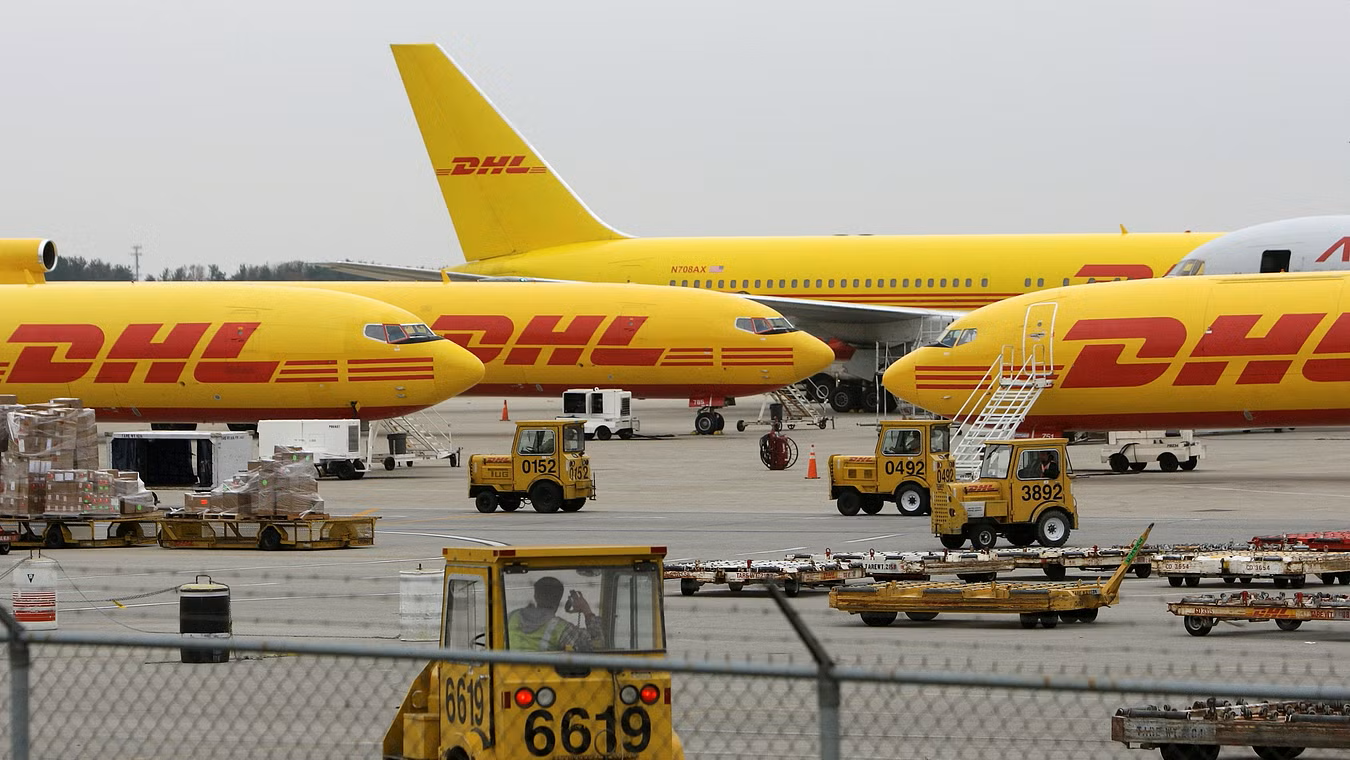Beyond the Seatbelt: The Passenger’s Role in Modern Aviation Safety
23 February, 2025
5 min read
By joining our newsletter, you agree to our Privacy Policy


We’re all used to sitting back, relaxing, and maybe sipping on something cold with a packet of pretzels at 35,000ft. But do you know how to ensure you—and those around you—are as safe as possible while in the air?
While safety during a flight ultimately rests with the cabin and flight crew, passengers also have an important role to play. From understanding where batteries should be stored to knowing why baggage must stay put during an evacuation, being an informed passenger can make a real difference when it counts most. Here are a few key areas to keep in mind.
Batteries in Hold Luggage: A Hidden Danger
When checking in for a flight, either online or at the airport, have you ever noticed the rules about what you can and cannot pack in your hold luggage? In 2023, the US Federal Aviation Administration (FAA) recorded over 70 lithium-battery-related incidents, including fires caused by power banks, laptops, and e-cigarettes. Placing any kind of battery in the hold isn’t just a regulatory issue; it’s a major safety risk.

If a lithium battery ignites in the hold, the fire can quickly escalate to dangerous temperatures of over 600°C, potentially compromising the aircraft's integrity. While cargo holds have fire suppression systems, these systems are less effective against battery fires, which can reignite even after being extinguished.
Airlines typically advise passengers to carry batteries in the cabin, within their hand baggage, and preferably in an easily accessible location. But battery-related incidents can still happen mid-flight. In January 2025, an Air Busan Airbus A321 experienced a fire in the cabin after a power bank in an overhead bin caught fire. Fortunately, all 176 passengers escaped safely, but the aircraft was written off. In response, Air Busan implemented stricter rules, requiring passengers to keep power banks and e-cigarettes with them at their seats rather than in overhead bins. Will other airlines follow their lead? Only time will tell.

In an Emergency: Leave All Baggage Behind—No, Seriously!
In an era of budget-friendly fares, many passengers travel with hand baggage only. But this increase in cabin luggage can present significant challenges during an evacuation. Despite clear safety instructions, some passengers instinctively reach for their bags when ordered to evacuate.
A stark example occurred in 2016 when an Emirates Boeing 777-300 crash-landed at Dubai International Airport following an aborted go-around. Footage emerged of passengers opening overhead lockers to retrieve their belongings as thick smoke filled the cabin. This reckless behaviour didn't just slow the evacuation—it could have cost lives. Luggage blocking aisles or damaging evacuation slides can prove fatal in a situation where every second counts.
Video: euronews (August 2016) | 'Jump! Jump! Jump! Leave your bags behind!' - Chaos inside crashed Dubai plane
The rule is simple: if you hear the evacuation command, leave everything behind and get out as quickly as possible. Documents and devices can be replaced; lives cannot.
Your Attention Is More Than Appreciated—It's Vital!
Let’s face it: if you fly regularly, you’ve probably tuned out a safety demonstration or two. But here’s the thing—not all aircraft are the same. The safety procedures, exit locations, and emergency equipment can vary significantly, even within the same aircraft type.
Paying attention to the safety briefing isn't just good manners; it’s essential knowledge that could save your life. Identify your nearest emergency exits (remembering that the closest one might be behind you) and count the rows to each exit in case you need to find your way in low visibility. Make sure your baggage is stowed correctly so it doesn’t block aisles or become a dangerous projectile if the aircraft makes a sudden stop.
Remaining Calm: A Critical Safety Skill
Panic is a natural reaction during an emergency, but staying calm can be the difference between life and death. A prime example is British Airways Flight 2276 in Las Vegas in 2015. When an engine fire erupted during takeoff, the cabin crew acted swiftly, and passengers who stayed calm evacuated efficiently. However, some passengers delayed the evacuation by retrieving luggage, demonstrating the dangers of panic.

In an emergency, listen to crew instructions, breathe deeply, and focus on the actions needed to get to safety. Remember, remaining calm isn't just for your benefit—it can also help others around you to stay composed.
Practical Tips to Stay Safe
Batteries: Always carry lithium batteries (e-cigarettes, power banks, laptops) in your cabin baggage, and never pack them in the hold. If possible, keep them on you, not in the overhead bin.
Evacuations: If you need to evacuate, leave all luggage behind. No exceptions. Seconds save lives.
Briefings: Pay attention to the safety demonstration, even if you think you know it all. Every aircraft is different.
Footwear Matters: Wear practical shoes when flying. In an emergency, high heels or flip-flops can slow you down or damage evacuation slides.
Brace Position: Know and practice the brace position appropriate for your seat. This simple action can reduce the risk of injury during an emergency landing.
Seatbelt Awareness: Keep your seatbelt fastened whenever you are seated. Sudden turbulence can cause injuries to unrestrained passengers.
Flying remains one of the safest ways to travel, thanks to robust safety standards, innovative technology, and well-trained crews. But passengers aren’t just along for the ride. By staying informed, alert, and proactive, you can help ensure that everyone arrives safely at their destination. So next time you buckle up, remember: there’s more to passenger safety than just fastening your seatbelt.
Get the latest news and updates straight to your inbox
No spam, no hassle, no fuss, just airline news direct to you.
By joining our newsletter, you agree to our Privacy Policy
Find us on social media
Comments
No comments yet, be the first to write one.


